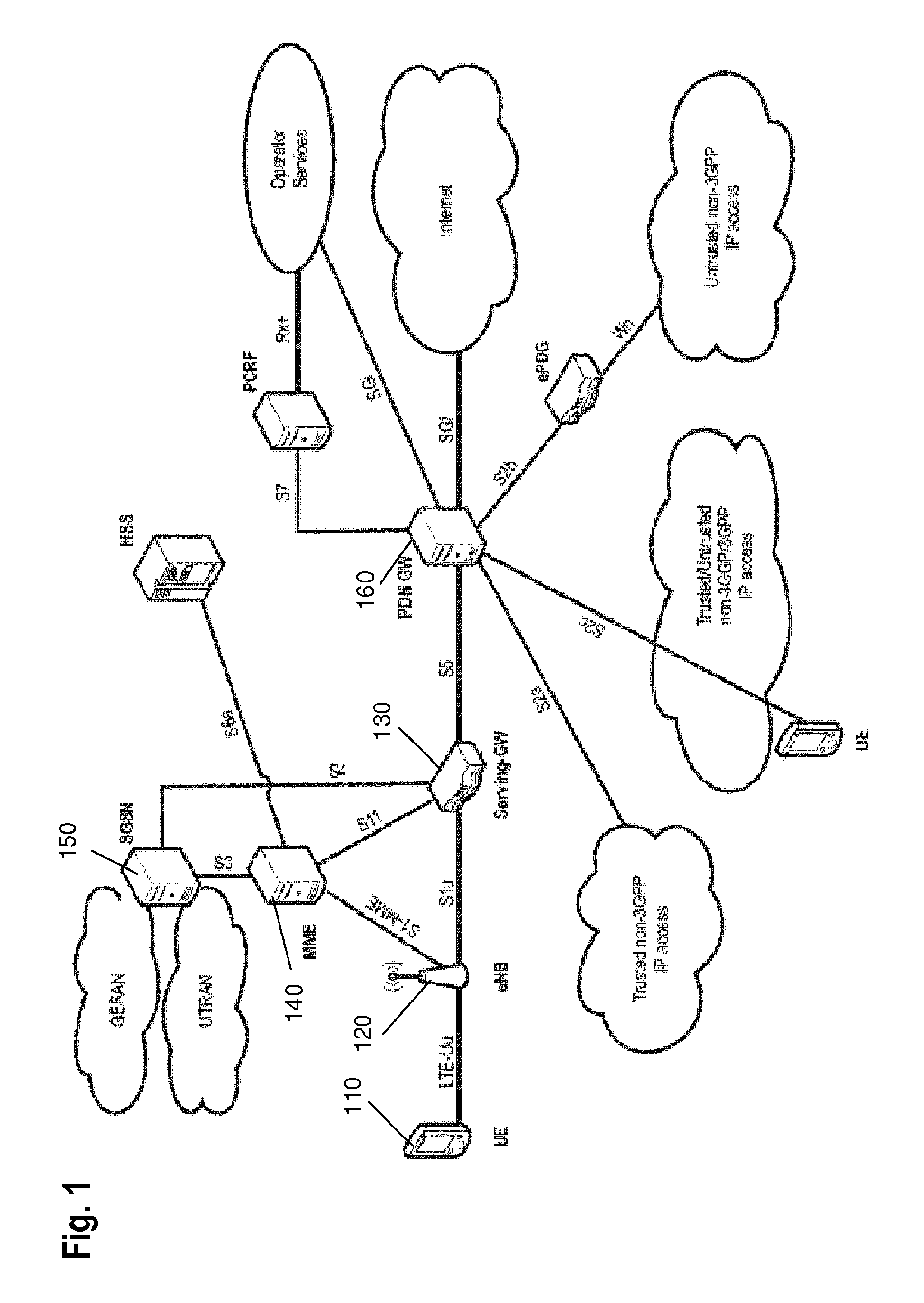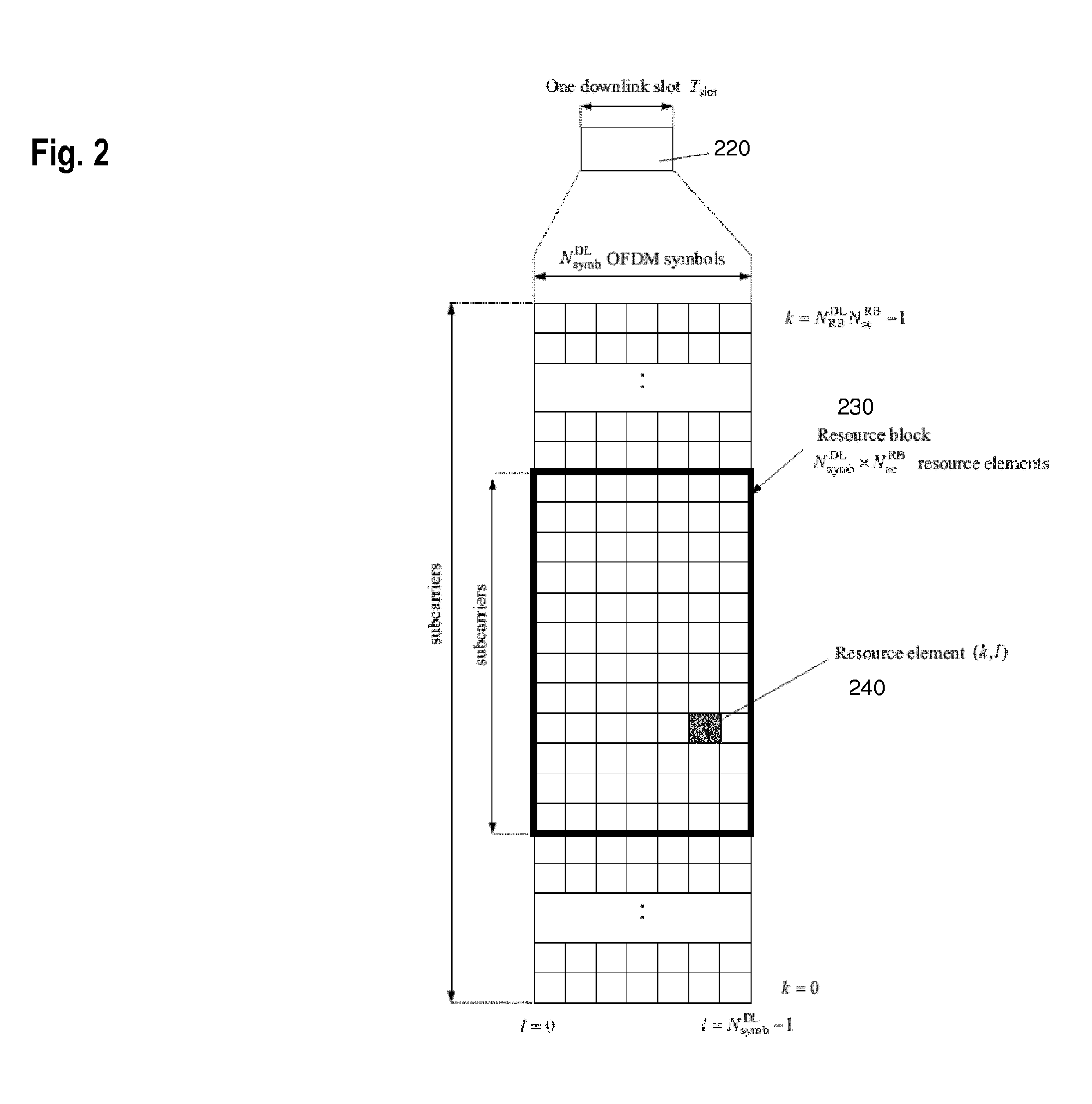Dynamic scheduling for subframe bundling
a subframe and dynamic scheduling technology, applied in multiplex communication, wireless communication, channel coding adaptation, etc., can solve the problems of mainly power limitation, loss of all resource assignments contained therein, and limited possibility of increasing transmission power
- Summary
- Abstract
- Description
- Claims
- Application Information
AI Technical Summary
Benefits of technology
Problems solved by technology
Method used
Image
Examples
Embodiment Construction
[0124]As already discussed in the background section above, the TTI bundling has been introduced into Release 8 of LTE in order to increase the uplink coverage for power limited terminals or scenarios. In particular, such a power limited scenario occurs, for instance, at the cell edge. An advantage of TTI bundling is also the reduction of overhead to avoidance of RLC segmentation.
[0125]One of the possibilities of defining the UE behavior is not to support dynamic scheduling of TTI bundling. Accordingly, the terminal declares any PDCCH carrying the uplink grant which is received during a TTI bundle transmission or retransmission as a false uplink grant and ignores it. A false UL grant is a grant which was not intended for the terminal (UE) which decoded (received) it. This may occur, for instance, when a terminal blindly decodes by using own RNTI a PDCCH and assumes falsely that it is intended for it (due to an incorrect detection / decoding).
[0126]It is noted that not all cases in whi...
PUM
 Login to View More
Login to View More Abstract
Description
Claims
Application Information
 Login to View More
Login to View More - R&D
- Intellectual Property
- Life Sciences
- Materials
- Tech Scout
- Unparalleled Data Quality
- Higher Quality Content
- 60% Fewer Hallucinations
Browse by: Latest US Patents, China's latest patents, Technical Efficacy Thesaurus, Application Domain, Technology Topic, Popular Technical Reports.
© 2025 PatSnap. All rights reserved.Legal|Privacy policy|Modern Slavery Act Transparency Statement|Sitemap|About US| Contact US: help@patsnap.com



